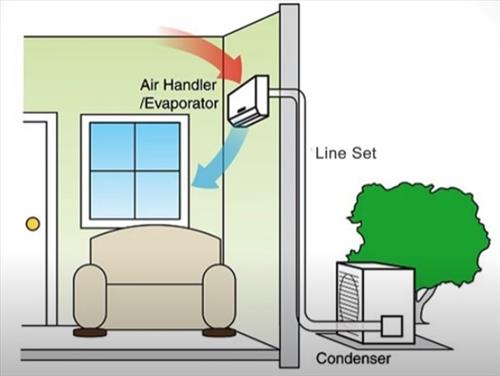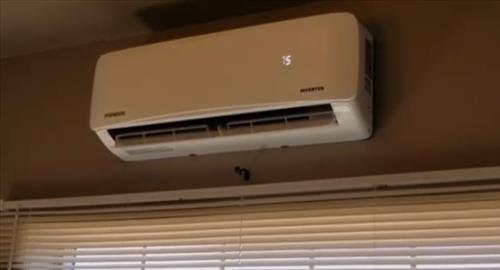
Mini split units have become hugely popular since they are low-cost to operate and can be installed by DIY-type individuals.
The benefits of mini splits are well known, but how do they work?
A mini split unit works the same as a larger split HVAC system but on a smaller scale.
There are also heat pump and air conditioner-only units.
What Is a Ductless Mini Split?
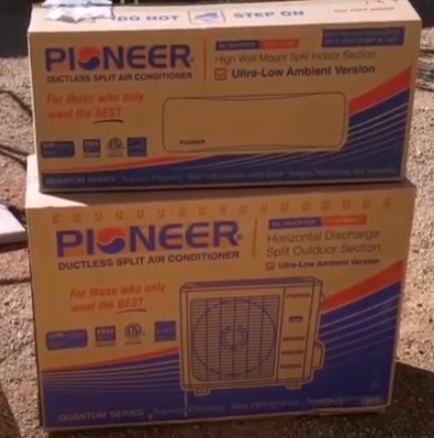
A ductless mini split is a smaller compact version of a conventional HVAC split system.
It requires no ductwork and simply blows out hot or cold air or into a room.
The installation includes the indoor air handler, outside condenser, and small copper lines running between the two units called a line-set.
The only modification to a home is a 3-inch hole that is cut in a wall to run the copper line set and communication lines.
Depending on the type of unit, they can both heat and cool a room.
3 Main Parts of a Mini Split Unit
- Indoor air handler
- Outside condensing unit
- Line set
There are three main components of a mini system the indoor air handler, the outside condensing unit, and the line set.
Indoor Mini Split Air Handler
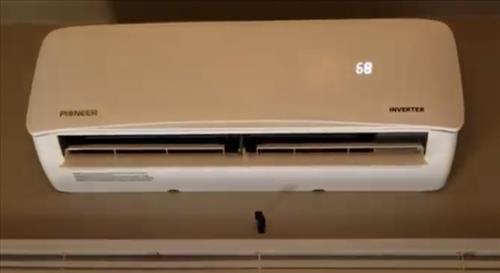
The indoor air handler is usually mounted on a wall but can also be installed on the ceiling.
It has a blower that blows air out, cooling or heating a room.
Outside Mini Split Condensing Unit
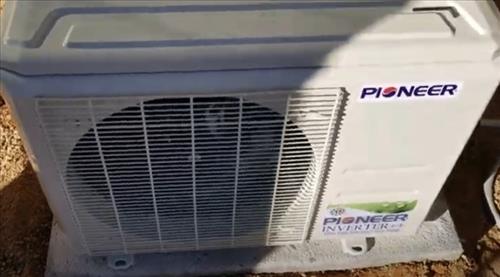
The outside condenser sits on a small pad and has a large fan that blows away air.
It contains a compressor to pump the refrigerant through the system and a large fan to blow air away.
Mini Split Line Set
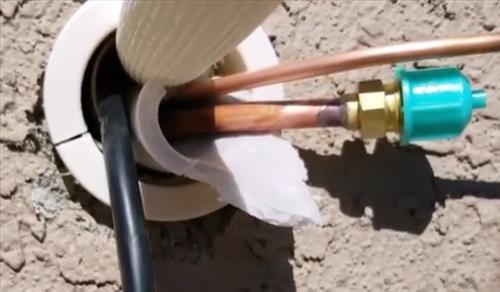
A line set is two copper tubes that carry refrigerant between the indoor and outdoor units.
The refrigerant transfers heat and cold inside and outside. During the installation the line set is covered to make it look more decorative.
A Mini Split Refrigerant Cycle
The refrigerant cycles through the system, transferring heat or cold inside or outside.
When a unit is in cooling mode, the outside condensing unit will push heat away with a large fan and sends cooled refrigerant back into the building.
The outdoor unit also contains a compressor that pumps the refrigerant through the system.
This refrigerant cycle transfers heat or cold to the inside or outside, depending on the unit and the setting.
Heat Pump vs. Air Conditioning Only Mini Split
There are two main types of mini split packages heat pump and air conditioner only units.
A heat pump can both heat and cool and is the most common type of mini split.
Air conditioner only units only cool and do not heat in the winter.
While heat pump units can heat, they will have a rated low temperature they can still heat before they freeze up.
Most units can work down to -10 to -20 degrees Fahrenheit before they stop heating.
Be sure to check the specifications of a unit to know what temperature range it can operate in since it can vary.
If the climate is very cold in the winter, another heat source is recommended for very cold days.
Mini Split vs. Conventional HVAC
Both mini split units and conventional split HVAC units work the same as far as the refrigerant cycle.
The main difference between the two is that mini split units are ductless, and conventional HVAC systems use ducts to transfer air around a home.
Since no ducts are needed, mini split units can be installed almost anywhere without modifying an existing system.
Benefits of Mini Split
- Cost-effective
- DIY installations
- Highly versatile
- No ductwork needed
- Very efficient
Disadvantages of Mini Split
Summary
Mini spit units work the same as conventional HVAC systems, only on a smaller scale.
The biggest difference is that they don’t use ducts like conventional HVAC systems.
They are also often much more efficient than traditional HVAC systems with higher Seer ratings.
While the units only cool or heat one room, some air can pass to another room.
Multiple units are best for heating and cooling an entire home, often with three or more units installed.
There are also different sixes based on the BTU that can be matched to a room or space square footage.
Mini split units are highly versatile units that can be a good fit in a variety of scenarios.
